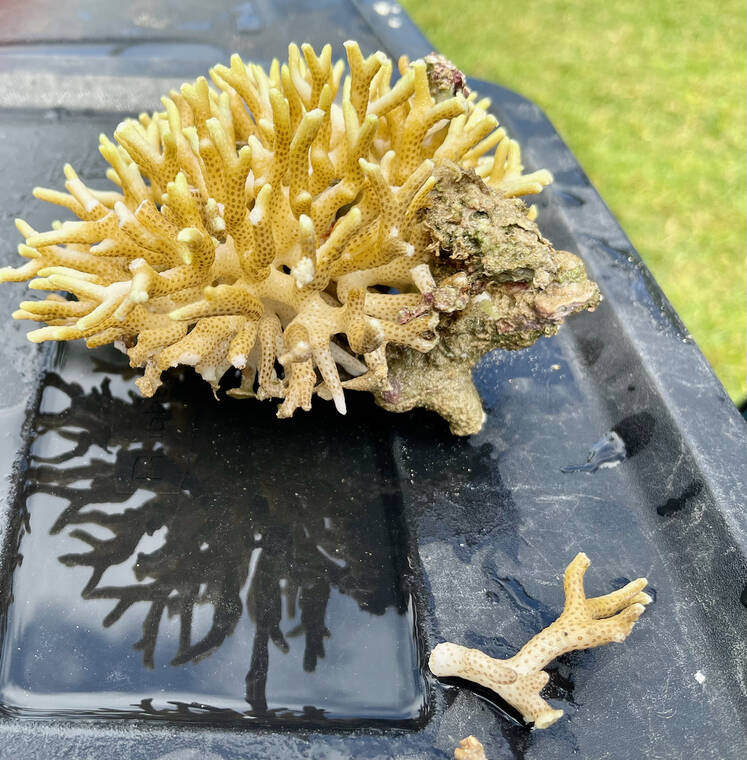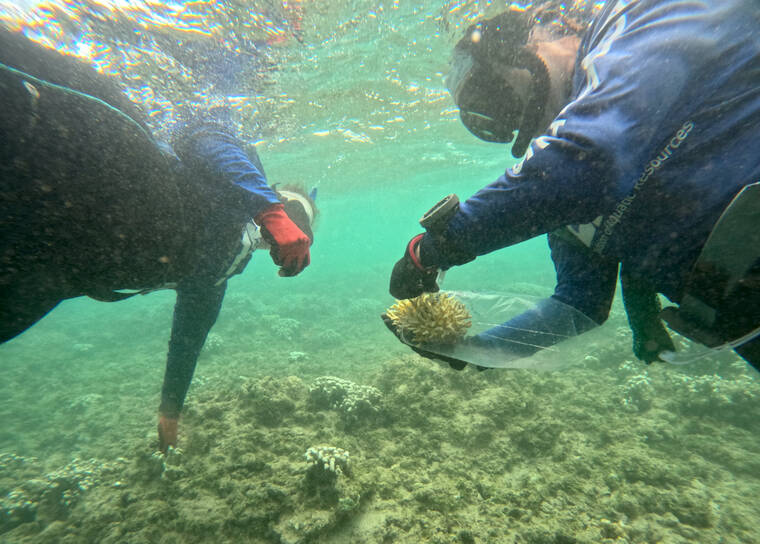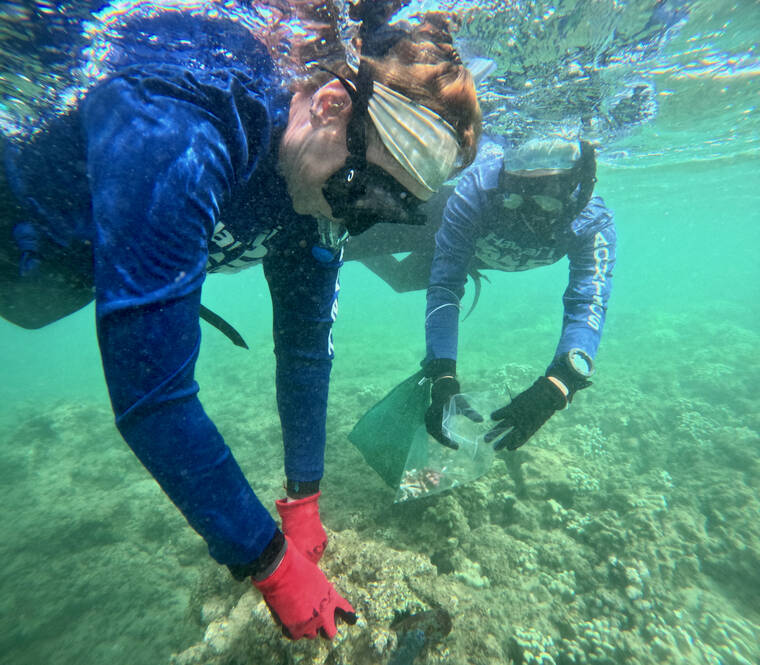ANINI BEACH —A mission to combat non-native coral found off Anini Beach got a big boost when a state agency got involved in the process.
The Department of Land and Natural Resources (DLNR) said a team from the Division of Aquatic Resources (DAR) was sent to Kaua‘i on April 4 to remove the remaining coral found in the water.
The five members of the DAR team arrived at Anini expecting to only remove two species of non-native coral, but upon further search they ended up extracting four coral colonies.
“We did OK,” said Dr. Heather Ylitalo-Ward, the aquatic biologist leading the team. “We went out for two and we got four. It’s a good thing and a bad thing.”
The DAR team believes the non-native corals are a result of an individual dumping the contents of a saltwater aquarium in the ocean. A DAR team member recalls a Kaua‘i Craigslist ad on aquarium saltwater coral being sold online that could possibly be tied to this case.
The non-native reef was first detected by local nonprofit Reef Guardians in 2021. However, when The Garden Island looked into the issue in March, only one species of non-native coral was found.
DAR Outreach and Education Specialist Aaron Swank said the coral colonies “appeared to be fragments that rooted and started growing and possibly spread from the first colonies, none of the four we removed on Thursday (April 4) were tied down.”
A chisel and hammer were used to free the coral and DNA samples still need to be conducted to be certain of the exact species.
“They appear to be Indo-Pacific species, which are not native to Hawai‘i,” added Ylitalo-Ward ”Our concern is that they could spread disease.”
The non-natives are not yet considered invasive because they’re isolated to a relatively small area and are small. The DAR team plans to keep it that way. In addition to community reports, the team surveys the entire area of Anini Beach Park, twice each year.
“We are happy we removed four, but it’s also disappointing that there’s still non-native coral out there,” said Ylitalo-Ward.
Both Ylitalo-Ward and Swink are thankful for the community members who alerted them to the presence of the non-native corals and encourage anyone who sees something ‘weird’ to note the location, take photographs and contact them.
“It was the keen eyes of the Reef Guardians who kept this from becoming another invasive species situation,” Swink said.







